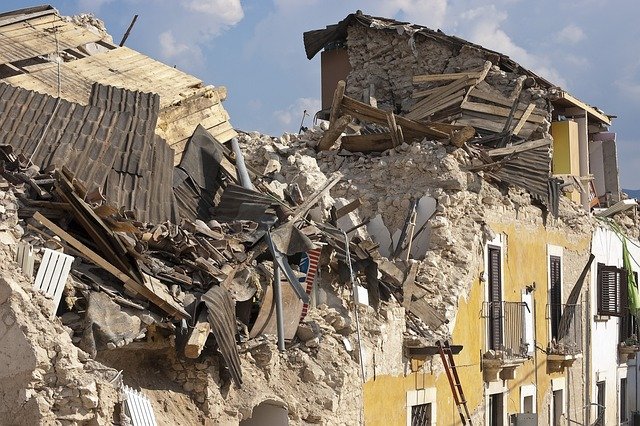“Earthquake pipes” could refer to flexible piping systems designed to withstand seismic activity, preventing leaks and damage during earthquakes. These pipes are essential in ensuring the integrity of water and gas lines and maintaining safety and functionality in affected areas. In this article, we will look at the different earthquake pipes, their functions, how they are designed, and how to maintain them.
Introduction: Earthquake Pipes
One of our greatest fears in times of natural disasters like earthquakes is the damage to pipelines. That is why it is crucial to effectively manage these kinds of earthquake-resistant pipelines in times of earthquakes to secure water, gas, and sewage line systems. In this article, we will discuss earthquake pipes, their types, their significance, design considerations, and care instructions.
What are Earthquake Pipes?
Earthquake pipes are a series of pipelines that have been created to resist the magnitudes developed due to earthquakes. The pipe systems are important for supply during seismic activities that interfere with supply systems for clean water, sewage disposal, and gas. Generally, these pipes may get cracked, broken, or displaced leading to leakage, pollution, and interruption of services.
Importance of Earthquake Pipes
Safety
With a balanced design, these pipes do not break or burst causing damage and ensuring protection to people and buildings during the time of earthquakes.
Continuity of Service
A dependable pipeline system guarantees the uninterrupted provision of basic needs like water and gas even in the event of an earthquake.
Cost-Effectiveness
There would be minimal expenses incurred in repairs as well as short periods of inactivity after the occurrence of an earthquake.
Types of Earthquake-Resistant Pipes
1. Flexible Pipes
Flexible pipes are mostly polyethylene or PVC materials and can stretch without snapping.
Advantages
These pipes are flexible and can bend and sway without breaking and are therefore recommended for regions that frequent seismic activity.
Ductile Iron Pipes
Material
Ductile iron pipes are manufactured using iron whose ductility is higher, allowing these pipes to withstand higher stress levels.
Advantages
Mechanically, ductile iron pipes retain high levels of strength with high corrosion resistance; therefore these pipes are applicable for the water supply systems.
When designing the pipe systems possibly resistant to seismic acts, the following should also be regarded: Location and Seismic Movement First assess the seismic history of the location and the type of soil as well as to be able to specify the pipe. Pipe Material Select suitable materials that would provide flexibility and strength for seismic forces would be anticipated.
Joint Design This design requires that flexible joints and connectors be used to provide for movements and to minimize stress on the pipes. Installation Techniques Good installation techniques including but not limited to suitable pipe depth burial and protection measures can improve the resistance of the pipeline to earthquakes.
Maintenance Tips for Earthquake Pipes Regular Inspections Such inspections should include the determination of any level or rate of corrosion of pipes or other consumable parts of the joint.
Repair and Replacement Where any damage occurs or is detected within allowable limits, information shall be transmitted to repair the pipeline system.
Emergency Preparedness – Instruct the staff to have an emergency response plan which also details the procedures for pipe failure after an earthquake.
Community Awareness:
Make the appropriate community aware that they need to be prepared for earthquakes and should know that pipelines assist with disaster response.
Classification of Pipes Against Earthquakes
Flexible Pipes
Material: Flexible pipes are made of Polyethylene or PVC. Such pipes do not break even when they are bent and moved.
Heavy Industry:
Seismic shocks are not transferred to the pipes as much as rigid ones and therefore, ideal for areas with high tendencies of earthquakes.
Ductile Iron Pipes
Material: The material has ductility optimization that withstands higher stress levels.
Heavy Industry: Ductile iron pipes are very strong and do not corrode much making them essential for water supply.
Steel Pipes
Material: Steel pipes are made from different grades which provide durability and flexibility.
Heavy Industry:
Steel pipes can withstand the power of high pressure and have a huge application for the distribution of gases.
Reinforced Concrete Pipes
Material: Reinforced concrete pipes were designed to achieve a specific strength by providing reinforcement.
Heavy Industry:
Reinforced Concrete pipe is one of the material that are used widely for stormwater drainage and also for sewage collection sistem.
Conclusion
First, the role of protective tubes ostensibly is very important in public health and in the operational service provision for earthquakes. Second, through appreciating the specific nature of their respective earthquake pipes, the significance of these pipes and the factors that influence their design, the municipalities and utility providers will be able to incorporate measures that improve preparation for seismic shocks. Educating communities and ensuring regular maintenance also further enhance the environment so as to minimize the effects of earthquakes on the built environment and society.



